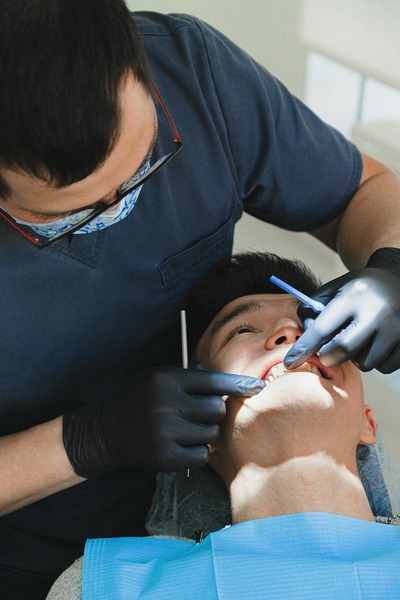When Should I Consider Replacing My Dental Bridge?
So, you’ve got a dental bridge, and you’re wondering if it’s time to replace it. Dental bridges are fantastic solutions for missing teeth, but like all dental appliances, they have a limited lifespan. Knowing when to replace your dental bridge can be crucial for maintaining good oral health. Let’s walk through the signs and factors that suggest it’s time for a change.
Signs It’s Time to Replace Your Dental Bridge
Here are some telltale signs that it might be time to replace your dental bridge:
Pain or Discomfort
If you experience persistent pain or discomfort around your dental bridge, it could be a sign of an underlying issue. Pain might indicate that the bridge is no longer fitting correctly or that there is decay beneath it.
Visible Damage
Damage to the bridge, such as cracks, chips, or breaks, can compromise its functionality. If the damage is extensive, it might be more practical to replace the entire bridge rather than repairing it.
Looseness or Movement
Your dental bridge should fit snugly without any wobbling or moving. If you notice any looseness, it could mean that the cement holding it in place has worn away or that the supporting teeth are weakened.
Stains or Discoloration
Dental bridges are designed to match the color of your natural teeth. Over time, they might become stained or discolored, making them stand out. While cosmetic, this could be a good reason to consider replacement if aesthetics are important to you. Alternatively, if you’re considering cosmetic enhancements, think about options like porcelain veneers in Albuquerque. They offer a range of benefits beyond bridges, enhancing the appearance of your smile.
Gum Bleeding or Recession
Healthy gums are crucial for the stability of your dental bridge. If you notice bleeding gums or gum recession around the bridge, it’s worth getting it checked out by your dentist. Gum issues can signify that your bridge is affecting your oral health negatively.
Aging Bridges
Most dental bridges have a lifespan of 5 to 15 years. If your bridge is within this age range, it might be time to discuss replacement with your dentist, even if you haven’t noticed any issues yet. The longevity of a bridge can vary depending on the materials used and how well you’ve maintained your oral hygiene.
Factors to Consider for Replacement
Sometimes, the decision to replace a dental bridge isn’t solely based on visible signs. Here are a few other considerations:
Changes in Oral Structure
Over time, your mouth undergoes changes. Teeth might shift, or bone loss could occur, altering the fit of your dental bridge. Annual dental checkups can help monitor these changes and determine if a new bridge is necessary.
Improvements in Dental Technology
The dental field is continually evolving, with new materials and techniques offering better results. If your dental bridge is older, opting for a replacement can give you the benefits of these advancements, such as improved aesthetics and durability.
Maintaining Oral Health
Maintaining optimal oral health is crucial. A dental bridge is only as effective as the teeth and gums that support it. If you have dedicated efforts to brushing, flossing, and regular dental visits, your bridge might last longer. However, if there have been lapses in your oral care routine, replacement might be necessary sooner.
Consulting with a Dentist
Whenever in doubt, a visit to your general dentist in Albuquerque can provide clarity. Dentists have the expertise to evaluate the condition of your dental bridge and advise you on the best course of action. During your visit, they can also check for underlying issues like decay or bone loss and recommend appropriate treatments.
The Replacement Process
Once the decision to replace your dental bridge is made, understanding the process can help ease any concerns you might have.
Initial Consultation
Your dentist will conduct an initial assessment to evaluate the state of your current bridge and the health of your supporting teeth and gums. They’ll discuss various options with you, including materials and cost considerations. Additionally, you’ll have the opportunity to ask about the longevity of dental bridges. Your dentist can explain how long dental bridges last, depending on factors such as the material used and your oral hygiene habits.
Preparation
The preparation phase involves removing the old bridge and preparing the adjacent teeth for new crowns if necessary. This might include reshaping them or addressing any decay or damage.
Impressions
Impressions or digital scans of your teeth are taken to create a custom-fit bridge that matches your natural teeth’ shape and color. Modern techniques can ensure a high level of precision for optimal comfort and aesthetics.
Temporary Bridge
A temporary bridge may be placed while your new permanent bridge is being fabricated. This helps protect your teeth and maintain functionality in the interim.
Final Placement
Once your new bridge is ready, it will be securely placed and adjusted for a perfect fit. Your dentist will ensure that it feels comfortable and looks natural, blending seamlessly with your existing teeth.
Advantages of Replacing Your Dental Bridge
While the replacement process might seem daunting, there are several benefits:
-
Enhanced Comfort: New bridges fit better and feel more natural.
-
Improved Aesthetics: Modern materials can match your teeth more accurately.
-
Better Oral Health: Addressing any underlying issues can prevent future complications.
-
Increased Durability: Advances in dental technology provide longer-lasting results.
-
Boosted Confidence: A well-fitting, natural-looking bridge can enhance your smile and self-esteem.
Maintaining Your New Dental Bridge
To ensure your new dental bridge lasts as long as possible, follow these maintenance tips:
Good Oral Hygiene
Brush your teeth at least twice a day and floss regularly. Cleaning around your bridge is vital to prevent decay and gum disease.
Regular Dental Visits
Schedule dental checkups every six months or as recommended by your dentist. Regular visits help catch potential issues early and keep your bridge in top condition.
Avoid Hard Foods
Avoid biting down on hard foods or objects, as they can damage your bridge. This includes ice, hard candy, and even using your teeth to open the packaging.
Wear a Mouthguard
If you grind or clench your teeth, wearing a nightguard can protect your bridge and natural teeth from unnecessary pressure and wear.
Final Thoughts
Knowing when to replace your dental bridge is essential for maintaining excellent oral health and ensuring your smile looks its best. By paying attention to the signs and consulting with your dentist, you can make informed decisions about your dental care. Investing in a replacement bridge, especially if it’s long overdue, can provide comfort, functionality, and confidence for years to come.
Categories

Recent Posts
- The Importance of Maintaining Rental Properties for Long-Term Success
- 3D Industrial Scanning versus Traditional Measurement: A Comparison
- Techniques to Increase the Range of Radio Communications in Industrial Settings
- How to Improve Fuel Efficiency in Your Vehicle
- Managing Tooth Sensitivity: Expert Tips and Treatments
Theme by The WP Club . Proudly powered by WordPress

